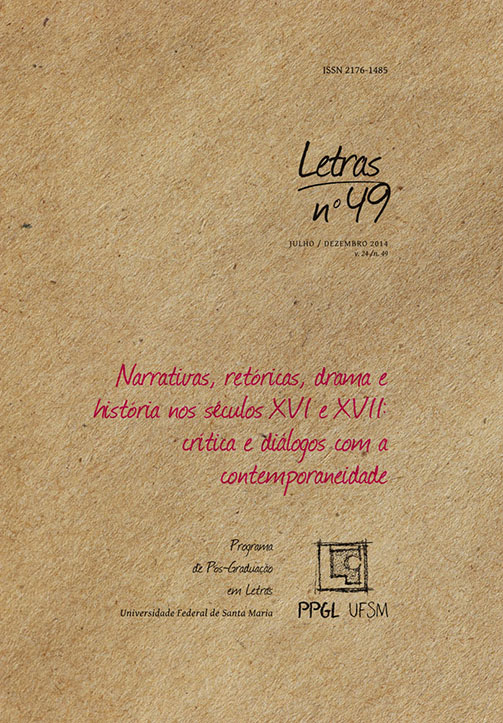Georges Scudéry’s Ekphrasis: imitation and metamorphosis
DOI:
https://doi.org/10.5902/2176148516594Keywords:
Ekphrasis. Poetic. Pictural. Parangone. Description. Ut pictura poesisAbstract
In his Le Cabinet de Monsieur de Scudéry, Georges Scudéry developed a far-reaching poetic comment on some pictures painted by Italian, French, Flemish, Dutch and German painters of 15th and 16th centuries. Most of these comments were done in accordance with traditional ekphrasis, emphasizing thus the most common thematic figures and styles. In a second moment, however, this very figurative mode would easily turn into a discourse that asserts the illusionist dimension of art, and into a poetic discourse that comments on the politics of art in the seventeenth century. As he states his own legitimacy as a poet and celebrates the art of painting, Scudéry reinforces his own craft, a craft that is able to reveal simultaneously word and image. Painting, distinctively, is but a mediation between image and word. We intend here to inquire how Scudéry, as a critic and a connoisseur, took advantage of the notion of parangone in order to assert the primacy of language and the inferiority of pictorial artsDownloads
Download data is not yet available.
Downloads
Published
2014-12-26
How to Cite
Costa, L. de A. (2014). Georges Scudéry’s Ekphrasis: imitation and metamorphosis. Letras, (49), 115–130. https://doi.org/10.5902/2176148516594
Issue
Section
Articles







